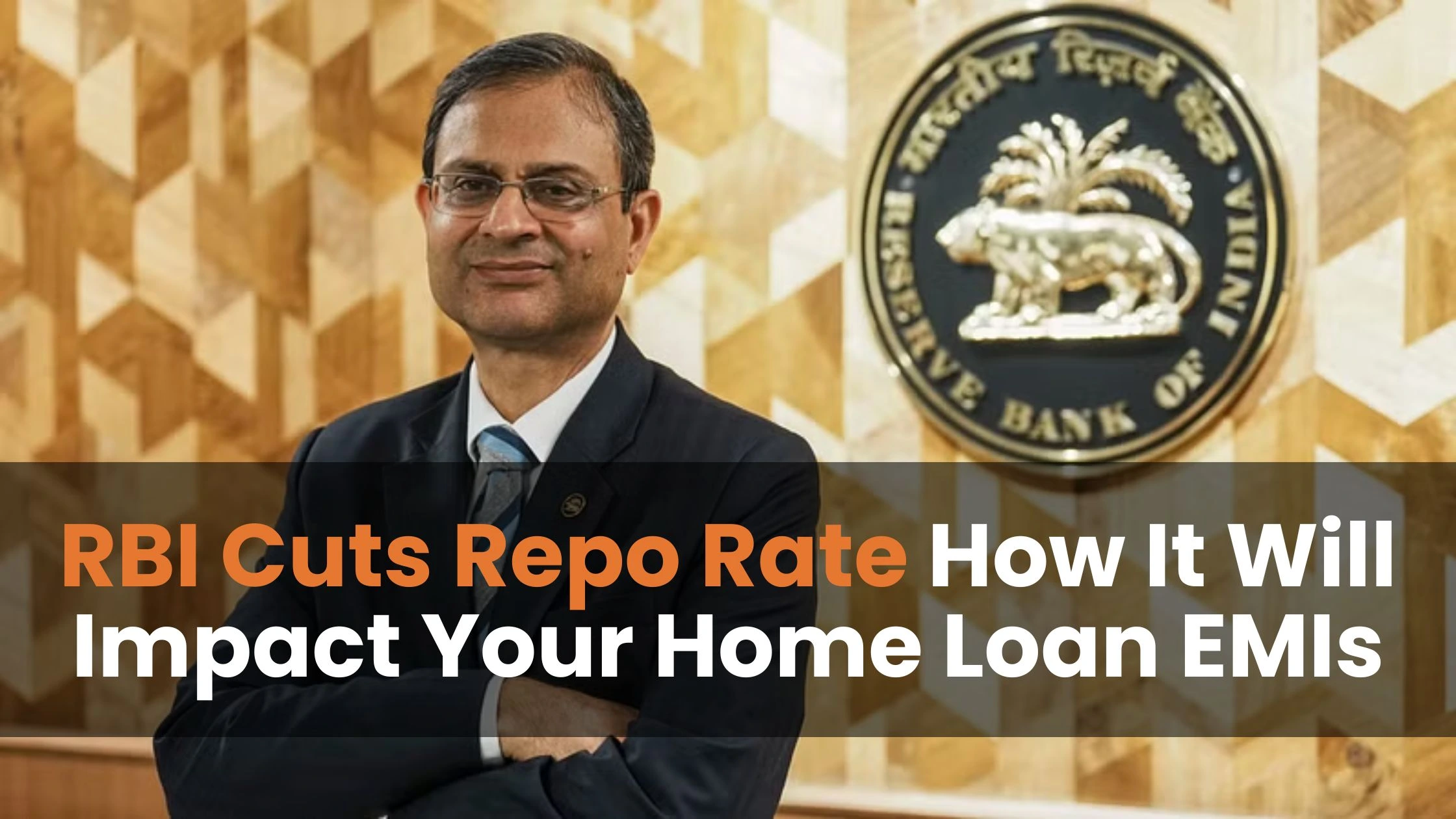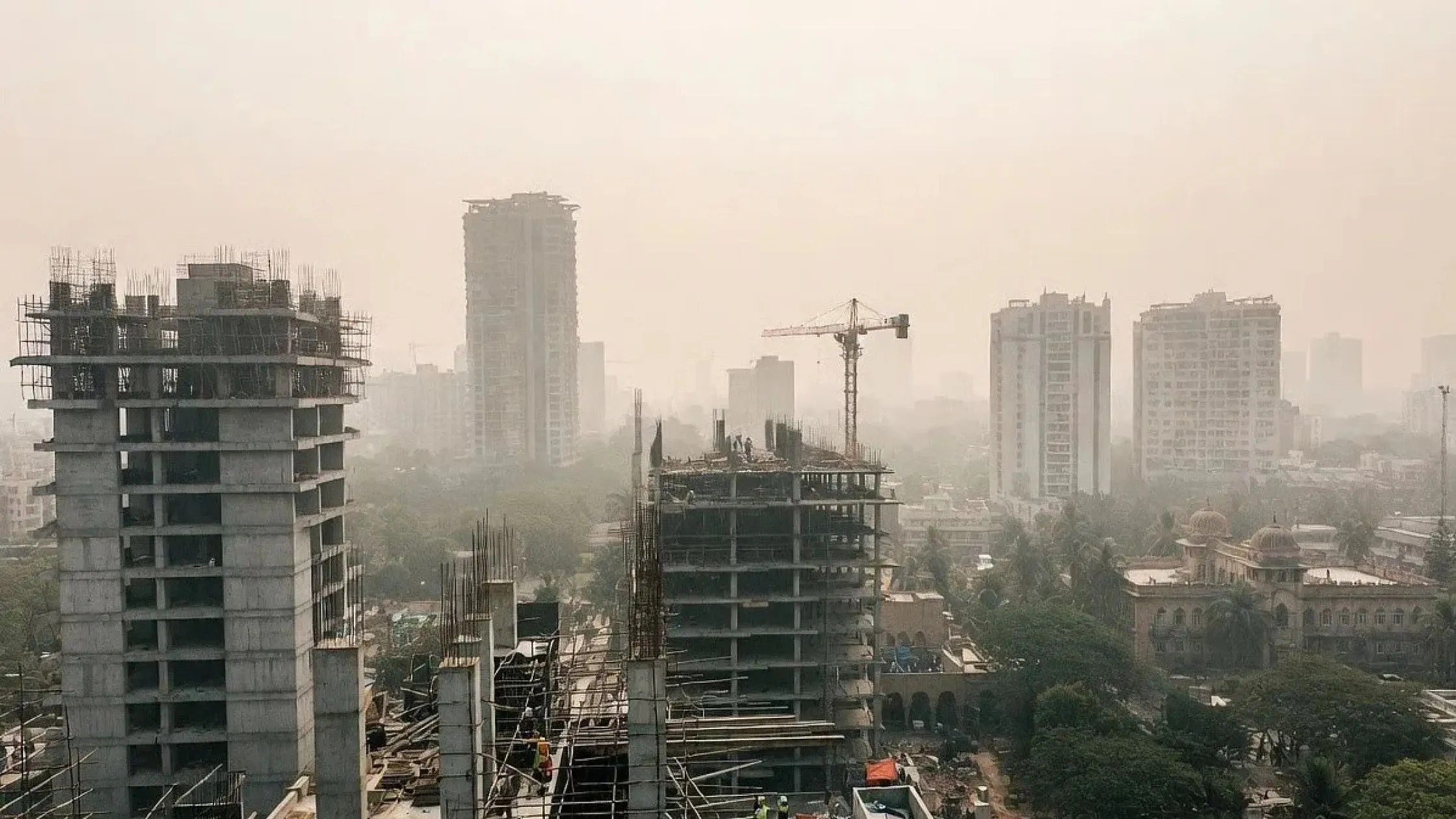Table of Content
The Reserve Bank of India (RBI) recently reduced its repo rate by 25 basis points, a decision that has generated considerable relief for home loan borrowers. This move is expected to lower the Equated Monthly Installments (EMIs) on home loans, with calculations showing a reduction of around 1.8% on a 20-year tenure. In this blog, we explore what this means for borrowers, how the repo rate influences EMIs, and the broader impact on the housing market and the economy.
Understanding the Repo Rate and Its Impact
What is the Repo Rate?
The repo rate is the interest charged by the RBI when lending money to commercial banks. A reduction in the repo rate makes borrowing less expensive for banks. In turn, these banks usually pass on the benefit to their customers by reducing the interest rates on various loans, including home loans.
Also Read: How the 6.25% Repo Rate Cut Impacts the Economy
How Does a 25 bps Cut Affect Home Loan EMIs?
A reduction of 25 basis points (or 0.25%) in the repo rate may seem small, but it can significantly impact home loan interest rates. For a home loan with a 20-year tenure, this reduction typically translates into a drop of around 1.8% in the EMIs. For example, if you are paying an EMI of Rs 20,000, a 1.8% reduction would lower your monthly payment by approximately Rs 360. While this might not sound like a huge amount on its own, over the long term, these savings add up substantially, easing the financial burden on borrowers.
Why Is This Change Good News for Home Loan Borrowers?
1. Lower Monthly Payments
Lower EMIs mean that home loan borrowers have more disposable income each month. This extra cash can be used for daily expenses, savings, or investments, which is especially beneficial during economic uncertainty.
2. Increased Affordability
With reduced EMIs, more people may find it financially feasible to take out a home loan. This increased affordability can boost home ownership rates, making it easier for individuals and families to secure their own homes.
3. Encouraging Investments in Real Estate
Lower borrowing costs often lead to a surge in real estate investments. As more people are able to afford home loans, the demand for properties may rise, potentially leading to higher property values and a healthier real estate market.
4. Economic Benefits
The ripple effect of lower EMIs extends beyond individual borrowers. Increased consumer spending, higher home ownership, and a vibrant real estate market contribute to overall economic growth. When people save money on EMIs, they can spend more on other goods and services, fueling the economy.
How the EMI Reduction Works
Step-by-Step Breakdown
1. Interest Rate Reduction:
When the RBI cuts the repo rate by 25 bps, banks reduce their lending rates on home loans.
2. Calculation of EMIs:
Home loan EMIs are calculated based on the loan amount, interest rate, and loan tenure. A lower interest rate reduces the monthly EMI.
3. Long-Term Savings:
Over a 20-year loan tenure, even a small percentage drop in EMIs results in significant total savings for the borrower.
Also Read: Mumbai Metro 2025: Enhanced Routes, Stations & Real Estate Impact
Example Calculation
Consider a borrower with a home loan of Rs 50 lakh at an interest rate that gets reduced such that the EMI falls by 1.8%. If the original EMI was Rs 20,000 per month, the new EMI becomes approximately Rs 19,280. Over 20 years (or 240 months), this saving accumulates to nearly Rs 86,400—a substantial amount that can help ease financial stress.
Broader Impact on the Housing Market
Real Estate Market Boost
Lower home loan EMIs can have a profound effect on the real estate market:
- Higher Demand for Properties:
As more individuals can afford home loans due to lower EMIs, the demand for housing is expected to rise. This increased demand can spur new construction projects and renovations, driving growth in the real estate sector. - Rise in Property Values:
Enhanced affordability and better financing conditions often lead to an increase in property values, particularly in areas with robust growth potential. - Urban Development:
As the metro and other public infrastructure projects progress, the combination of improved connectivity and affordable home loans can make urban areas even more attractive for investments.
What Should Borrowers Do?
If you're a home loan borrower or considering taking a home loan, here are some steps to make the most of these benefits:
1. Review Your Loan Terms:
Understand the current interest rate on your home loan and calculate how much the EMI reduction of 1.8% could save you over the loan tenure.
2. Consult Your Bank:
Reach out to your bank or financial advisor to understand how the RBI’s repo rate cut will affect your specific loan. Banks may offer personalized information based on your existing terms.
3. Plan Your Finances:
Use the potential savings from reduced EMIs to bolster your monthly budget. You could increase your savings, invest in home improvements, or use the extra cash for other financial goals.
4. Stay Updated:
Keep an eye on further announcements from the RBI and your bank regarding interest rate changes. Financial markets are dynamic, and staying informed can help you make the best decisions.
5. Consider Refinancing:
If your current loan terms are not favorable, explore the option of refinancing your home loan. A refinancing plan could take advantage of the lower interest rates, further reducing your EMIs.
Conclusion
The RBI's decision to cut the repo rate by 25 basis points is a significant boon for home loan borrowers. With EMIs expected to fall by around 1.8% on a 20-year loan tenure, borrowers can enjoy lower monthly payments and substantial long-term savings. This reduction in EMIs not only eases the financial burden on individual homeowners but also stimulates growth in the real estate market and contributes to the overall economic development of the country.
As more people take advantage of the favorable financing conditions, the ripple effect can lead to increased property demand, rising property values, and better urban development. Whether you're a current homeowner or planning to buy a house in the near future, this move by the RBI offers a promising outlook for more affordable and sustainable home financing.
By staying informed and taking proactive steps, you can make the most of these changes to secure a better financial future. The current environment is a reminder that even small changes in interest rates can have a profound impact on your finances over the long term, paving the way for a more stable and prosperous economic landscape.
Also Read: Save Tax by Paying Rent to Family? Here's What You Need to Know!







Ans 1. The repo rate is the interest charged by the RBI when lending money to commercial banks.
Ans 2. A lower repo rate reduces home loan interest rates, which decreases the EMIs borrowers need to pay.
Ans 3. On average, a 25 bps cut results in around a 1.8% reduction in EMIs for a 20-year home loan.
Ans 4. Banks usually pass on the benefits of a repo rate cut, but it’s advisable to consult your bank for specific details.
Ans 5. Refinancing can be a good option if your current loan terms are less favorable. Evaluate the new interest rates and terms before deciding.
Ans 6. Lower home loan interest rates make housing more affordable, increasing demand and boosting the real estate sector.
Ans 7. Lower EMIs free up cash for savings, investments, or other financial goals, improving overall financial stability.
Ans 8. Increased demand for properties due to affordable loans can lead to a rise in property prices over time.
Ans 9. No, it also influences other loans like car loans, education loans, and business loans.
Ans 10. The RBI reviews the repo rate during its monetary policy meetings, typically held every two months.